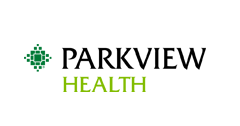Abstract
Introduction- Gastrointestinal cancers such as esophageal, gastric, colon, liver, and pancreas cancers present a significant global challenge. The burden of these cancers depends mainly on early recognition and treatment initiation. COVID-19 pandemic led to a strain on multiple healthcare systems resulting in stay-at-home restraints, which might have impacted early recognition of these cancers. The data about the the incidence of GI cancers during the pandemic is scarce.
Methods- All adult patients with a new diagnosis of GI cancers in 2020 were compared with the patients in 2019. ICD-10 codes were utilized to identify these patient from TriNetX, a federated cloud-based network that comprises 92 healthcare organizations across the US. The primary outcome of the study was rates of GI cancer diagnoses. The secondary outcomes were GI endoscopy (EGD/sigmoidoscopy/colonoscopy) utilization, rates of endoscopic ultrasound (EUS), and endoscopic retrograde cholangiopancreatography (ERCP), rates of CT/MRI imaging, and overall mortality. The outcomes were measured after 1:1 propensity matching of the groups based on the baseline demographics and comorbidities.
Results- A total of 166,302 patients were diagnosed with GI cancers (colon cancer followed by pancreas, liver, stomach, esophagus in descending order) in 2020 compared to 403,424 patients in 2019. There was a reduction of 41.2% in the diagnosis of new GI cancers in 2020. Comorbidities of these patients at presentation and clinical outcomes are noted in Table 1. After matching, rates of endoscopy utilization (risk ratio [RR]- 0.70 (CI- 0.67 – 0.74)), EUS/ERCP (RR 0.58 (CI:0.52–0.64)), CT/MRI (RR 0.95 (CI:0.90–1.00)) were lower in 2020 compared to 2019 group. 30-day all-cause mortality was also lower in 2020 group (RR 0.82 (CI- 0.79 – 0.86)).
Discussion- The rates of new GI cancers incidence decreased by 41.2% during 2020 compared to 2019. Moreover, endoscopy utilization was reduced by 30-42% during the pandemic. This signifies a major public health burden with a potential increase in the number of patients with late-stage cancers, adversely affecting their survival. These findings are probably related to reduced endoscopy rates utilized for cancer screening. Therefore, there is an urgent need to increase the GI endoscopy utilization and non-invasive tools to close the screening gap that occurred during the pandemic. Policy changes and stakeholders should pursue a consensus approach in developing mass screening strategies to meet the need.
Document Type
Article
Publication Date
10-2021
Recommended Citation
Perisetti, Abhilash MD; Mahanazuddin, Syed PhD; Yendala, Rachana MD; Goyal, Hermant MD; Tharian, Benjamin MD; Rojas, Mariajose MD; and Sharma, Neil MD, "Reduced Incidence of New Gastrointestinal Cancers Diagnosis During COVID-19 Pandemic" (2021). PCI Publications and Projects. 59.
https://researchrepository.parkviewhealth.org/oncol/59

